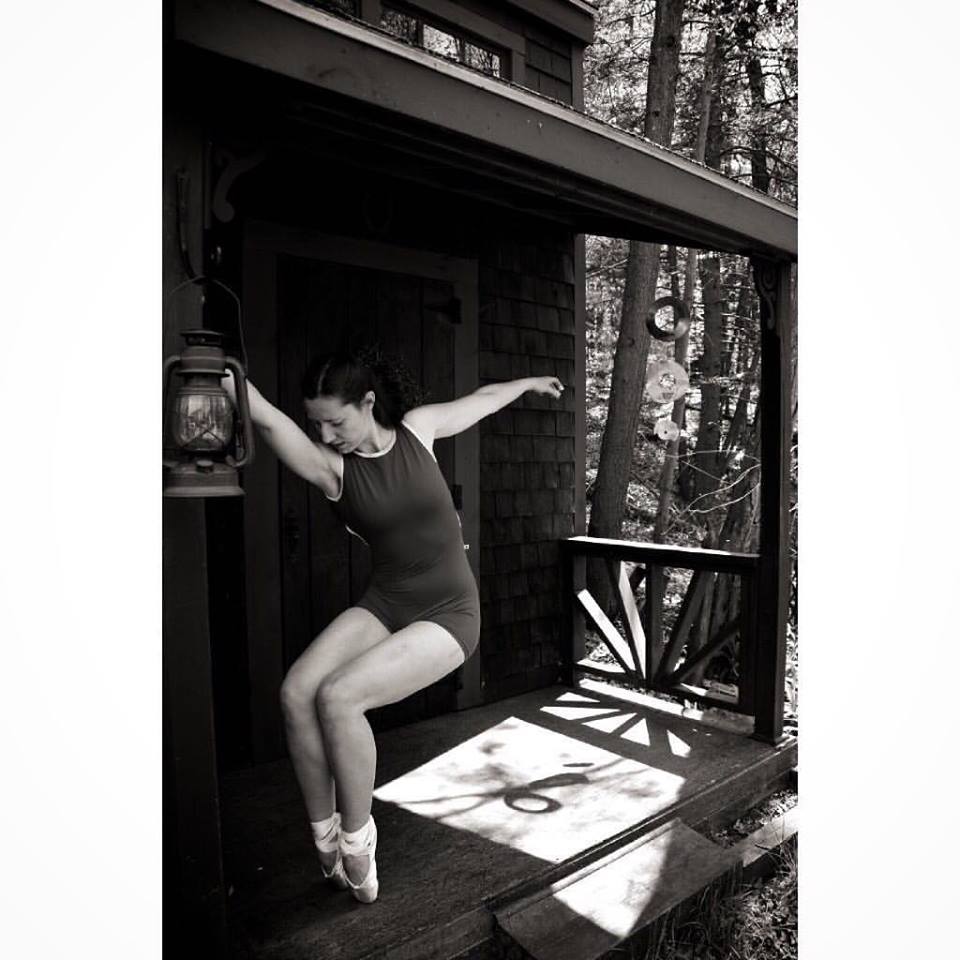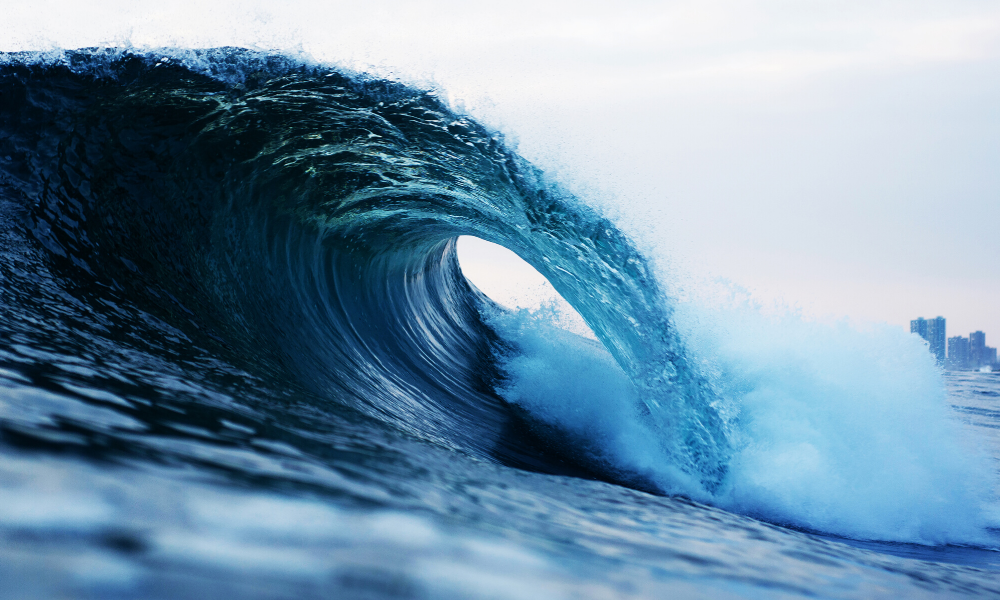We talk so much about how the practice of yoga can help with our daily lives, but we don’t often take the time to talk about how. This month in my Kripalu Yoga class, I’d like to invite you to join the conversation about how we can take lessons learned on the mat out into our daily lives. To start, I’d like to delve a little deeper into a concept that you might already be familiar with— “Riding the wave.”
The image of “Riding the Wave”
Last month on the blog about yoga for caregivers, Martha shared a beautiful illustration of what it means to ride the wave. (If you haven’t read it already, I strongly suggest you check it out.) Her visual imagery of allowing the flowing river to carry you downstream is a joyous account of what it can feel like to surrender to the flow of life.
Of course, not all experiences of “riding the wave” are necessarily positive. This concept can also be true when feeling something like grief, or even physical pain. In those instances, people often suggest to think of something else or to distract our minds with some other vice.
Counterintuitively, allowing yourself to feel the moment and allow that feeling to flow through you might actually allow it to pass. Of course, it’s not an easy thing to do, and no one is suggesting you jump right in. Just like yoga, it takes practice.
Lessons learned on the mat
This is where the practice of yoga can really help. Your mat is a safe space, free of judgment, to practice these skills and know that it’s OK to fail. There is that moment when you are in a pose and you start to think, “This is so hard, there is no way I can continue.”
But then you are reminded to take a deep breath, to feel the sensations flowing through your body, and come out of the pose. That point where difficulty and doubt start to sneak in is the point where “Riding the Wave” of sensation—and letting it flow over you just like the water—is so important.
This process is repeated over and over in every yoga class with every movement you make. Not only is yoga a physical practice for the body, it is so much more a mental practice.
Becoming the observer

Learning to allow the ebb and flow of thoughts and emotions, while becoming aware of that ebb and flow, is the practice of “Becoming the Observer.” It happens in noticing how you might like parts of class and dislike others, but also recognizing why.
For example, some days I feel completely empowered by starting class with strong Sun Salutations. Other times, I feel defeated and exhausted. In those moments, it is important for me to separate how I am feeling from my sense of being. “I feel exhausted today” is very different than “why can’t I do this today, I did it last week?”
Off the mat, this skill can be amazingly valuable. In the heat of an argument, being able to step back can sometimes completely resolve the situation. Have you ever realized in the middle of yelling at someone that you are actually hungry and your anger has nothing to do with him or her? This is a great example of “Becoming the Observer” — you were able to mentally step out of the situation enough to notice a different cause of your anger rather than just sitting in the argument.
Balancing effort and ease
Of course, there are moments when just pushing through a feeling is not the right thing to do. Just like in Martha’s example of the river flowing, there was a time when she decided to take a break and just get out of the river. Giving yourself the space to take a break without judgment can lead to seeing things from a different perspective. Sometimes it is this change in perspective that makes all the difference.
On the mat, this skill takes the shape of choosing between chaturanga or no chaturanga, or maybe not trying that arm balance a third time. In listening to our bodies and making these choices in the moment, we are embodying the balance between effort and ease without even thinking about it.
If only it were that easy off the mat. Bringing this skill into my life has been a continuing challenge for me. I tend to push too hard, being attached to the goal I set for myself so I end up crashing or putting up with things that I shouldn’t. Just like all of these concepts, it is a practice in itself . . . and I continue to do what I can in the moment to recognize when things are no longer serving me.
Letting Go
A big part of being able to ride the wave is being able to let go of your own expectations about what the ride should look like, and just rolling with it. I feel like this is a big one. On the mat, this skill feels like losing yourself in the movement of what you are doing. Leaving behind any thoughts about what you look like or what you think you should look like and allowing yourself to just move and feel sensation.
Taking this skill off the mat might be as simple as letting someone else make the plans and allowing yourself to enjoy whatever they have in mind. We get so fixated on expectations and that can easily lead to disappointment. It is unbelievably easy to walk around disappointed all the time not realizing that if you were able to let go of your own expectations, you might feel much better about yourself and the world we live in.

photo (c) David Lee Black
Being Present
I can’t tell you how many times this skill has come in handy for me. In retrospect, I think I was doing it before I even took my first yoga class. Any time you have one of those moments where you are drinking everything in, you are practicing this skill.
Maybe it’s a once in a lifetime event that you want to remember, like a wedding or a special moment with an aging relative, or maybe it’s a smaller personal moment with one of your kids. In these moments, we naturally become hyperaware of what we are feeling and the emotions are what keep these memories so clear through the years.
It also can come in quite handy to be able to control this sensation without a strong emotion attached. This is where practicing on the mat comes in. Being Present is first step in every single yoga class that you take. That time when you just start to settle in to being on your mat, feel your breath, notice sensation, let go of everything else… and just “be.”
Of course, none of the other concepts I mentioned above could even happen if you haven’t first taken the time to be present on your mat. Being in control of this skill off the mat allows you to choose what memories you make, and what moments you drink up. It can also be useful in moments of anxiety when thoughts are out of control. Being able to focus on the present moment—and only the present moment—can prevent those thoughts from building into something else.
Everything is Connected
Once you are tuned into your body and Present in the moment, you can Let Go of judgment and expectation, observe sensations as they arise, ride the wave of feeling and sensation in the moment and make choices based on those sensations that allow you to balance effort and ease.
All of these concepts really go hand in hand both on the mat and off. The mat is a safe place to explore these ideas and help develop these skills to be with you for life. I’ll see you on the mat.
Join Heather on Tuesdays in March for Kripalu Yoga as we practice these skills, so we can start taking our yoga off the mat!

